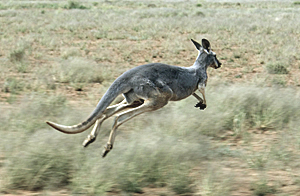Outback Australia What is the Outback - "The Bush"

The Outback is the vast, sparsely populated interior of the Australia. It makes up almost 85% of Australian continental landmass. Very few humans live out there. It is also sometimes called "The Bush" or " Beyond the Black Stump".
The Landscape
The Australian Outback is both harsh and breathtakingly beautiful. It is a unique and ancient landscape unlike anything anywhere else in the world. The flora and fauna have evolved over millions of years of isolation to be uniquely adopted to the harsh and arid conditions found here.
Outback Distances
In the outback you can travel for days without meeting anyone. This is why it is sometimes called the Never-Never: the never ending landscape; the never ending horizon; the never ending road going nowhere.
The land is unforgiving to the careless and foolhardy. You can die of dehydration within hours if you are not careful.
Outback People
Yes people actually do live in the outback.
The vast distances have forced people to adapt to their isolation (some people being more than a day's drive from their nearest neighbour). A two-way radio and an airstrip are vital to any outback station.
Because of the great distances some children in the outback cannot attend regular school. They learn from the School of the Air which is a special school where the teacher and student interact via a two-way radio.
The Royal Flying Doctor Service operates a fleet of airplanes outfitted as flying ambulances and clinics. They visit these remote locations to provide medical services. They also provides advice over the two-way radio.
An Outback Station
DID YOU KNOW
The term Station originally referred to a government run agricultural or pastoral establishment employing convicts. A throwback from Australia’s convict past.
Cattle and sheep are grazed on huge tracts of land called Stations (what might be called a ranch in the USA). Some stations occupy more land than some countries. Anna Creek Station located in South Australia, for example, is the largest cattle farm in the world it is bigger than Israel and eight time larger than the King Range in Texas (America's biggest).
Helicopters and small planes are usually used to round up stock (the sheep and cattle) and to check fences ( dingo and rabbit fences).
A person who rounds up stock is called a Stockman.
A person who works at a Station is called a Station-hand.
The owner is called a
Station-Manager.
Outback Mining
Large quantities of minerals and other resources are extracted in Australia . Most of this takes place in the Outback. Olympic Dam in South Australia (copper, silver and uranium) is believed to have the world's largest reserve of uranium.
Mineral resources make up about 16% of Australia's GDP and make up around 35% of its exports.( Australia is the world's largest exporter of coal making up 35% of the supply). Most of our resources are exported to China and India
Australia is the worlds largest producer of Opals; the second largest producer of Zinc; third largest producer of Iron Ore , Nickel, Uranium, Diamonds and the forth largest producer of Coal.
Outback Animals

There are many different types of native and introduced animals in the Australian Outback.
Native animals are well suited to the harsh and arid conditions of the Outback. They have adapted to the hot dry climate by resting in the shade during the hotter times of the day and coming out to feed only during the cooler hours of the morning and evening.
A number of animals were imported into Australia by early settlers and many of these are now feral and roam the outback. These include camels, horses, pigs, cats, rabbits and buffalo. These feral animals have had a severe impact on the very sensitive Australian ecology.
The Ghan
Australia has a railroad track that runs for 478 kilometres in a absolutely straight line. Its called the "long straight". Its is part of the Indian-Pacific railroad that runs from Perth to Sydney.
The Indian-Pacific railway is also the longest railway line in the world. It runs for over 4500 kilometres from the Indian Ocean in the west to the Pacific Ocean in the east.
"The Ghan" which originally ran from Adelaide to Alice Springs (now extended to Darwin) is named after the Afghan camel drivers, imported by the British, who used to lead camel trains along the same track.
All Rights Reserved. (Last Updated: Jan 28, 2023)